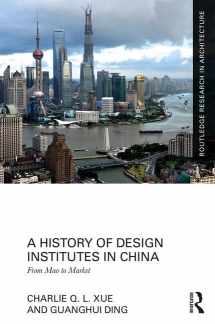
A History of Design Institutes in China: From Mao to Market (Routledge Research in Architecture)
ISBN-13:
9781138562332
ISBN-10:
1138562335
Edition:
1
Author:
Charlie Q. L. Xue, Guanghui Ding
Publication date:
2018
Publisher:
Routledge
Format:
Hardcover
230 pages
Category:
History
,
Architecture
FREE US shipping
Book details
ISBN-13:
9781138562332
ISBN-10:
1138562335
Edition:
1
Author:
Charlie Q. L. Xue, Guanghui Ding
Publication date:
2018
Publisher:
Routledge
Format:
Hardcover
230 pages
Category:
History
,
Architecture
Summary
A History of Design Institutes in China: From Mao to Market (Routledge Research in Architecture) (ISBN-13: 9781138562332 and ISBN-10: 1138562335), written by authors
Charlie Q. L. Xue, Guanghui Ding, was published by Routledge in 2018.
With an overall rating of 3.8 stars, it's a notable title among other
History
(Architecture) books. You can easily purchase or rent A History of Design Institutes in China: From Mao to Market (Routledge Research in Architecture) (Hardcover) from BooksRun,
along with many other new and used
History
books
and textbooks.
And, if you're looking to sell your copy, our current buyback offer is $0.3.
Description
A History of Design Institutes in China examines the intricate relationship between design institutes, the state, and, in later periods, the market economy through a carefully situated discussion of significant theoretical and historical issues including socialist utopia, collective and individual design, structural transformation, and architectural exportation, amongst others. It shows how, over the past six decades, China’s design institutes have served the state’s strategy for socialist construction and urbanisation to create socioeconomic and cultural value. Through first-hand research, authors Xue and Ding reveal how the tensions between pragmatism, creativity, collaboration, and resistance have played a crucial role in defining architectural production. Appealing to academics, researchers, and graduate students, this book provides a much-needed contribution to the discourse on architectural history, building practices, and policymaking in contemporary China.


We would LOVE it if you could help us and other readers by reviewing the book
Book review

Congratulations! We have received your book review.
{user}
{createdAt}
by {truncated_author}


